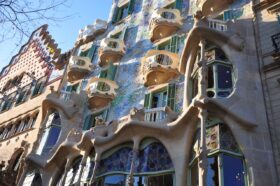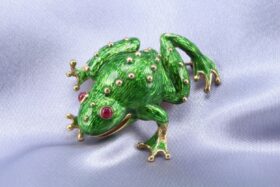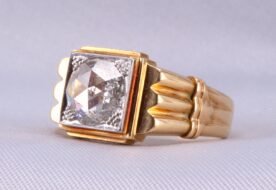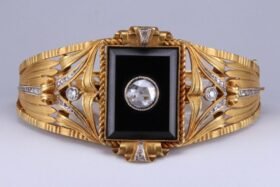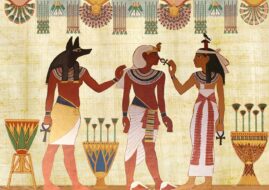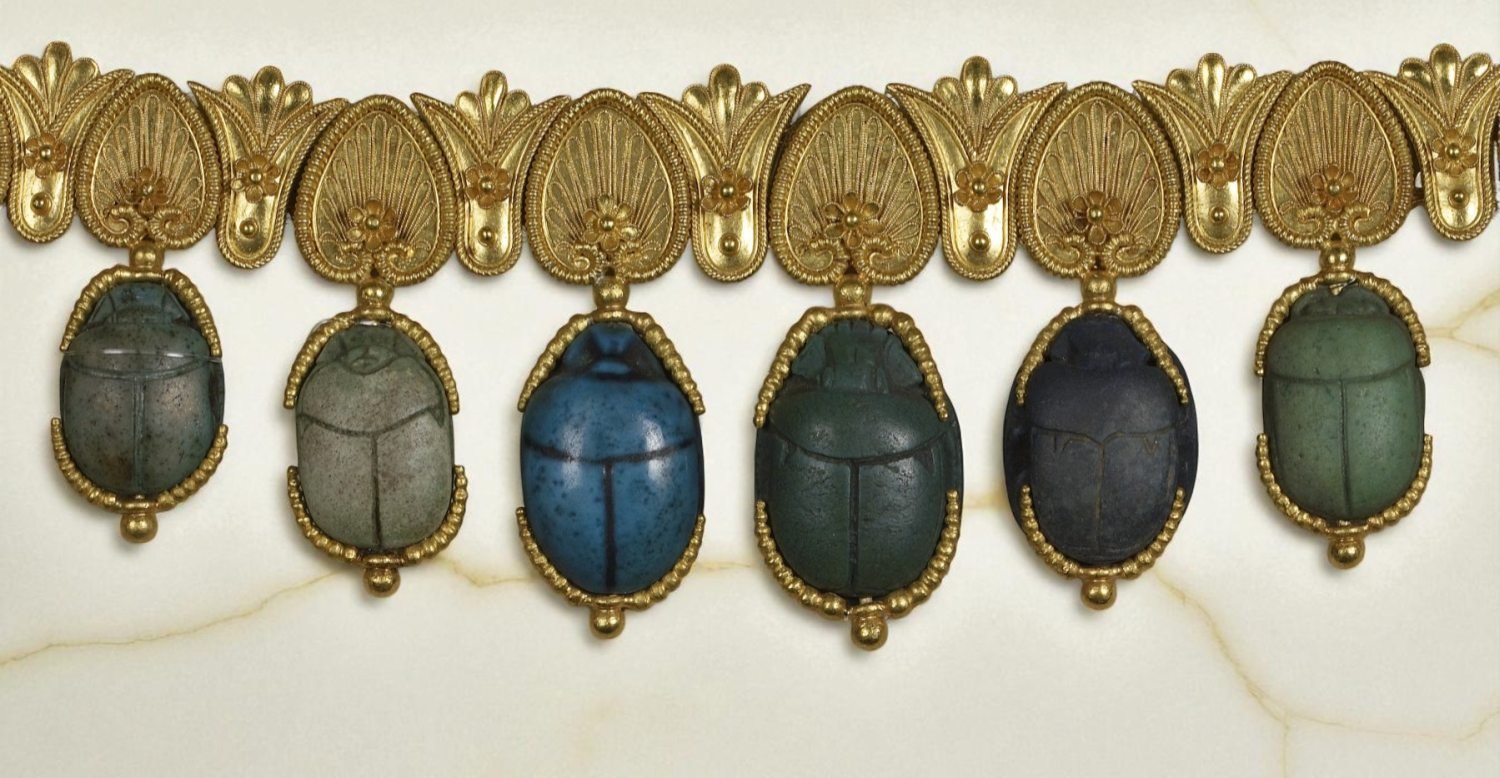
31 Jul Selling Your Insect Jewelry? A Brief History
Seen Above: From the famous 19th century Castellini workshop in Italy, a beautiful example of “archeological jewelry” in the form of a scarab (beetle) necklace set with lapis lazuli and steatite stones.
If you’re considering selling a piece of vintage or estate insect jewelry — a diamond bee brooch, an Art Nouveau dragonfly, or a scarab pendant with history — you may be surprised by the demand for such collectible designs. Insect jewelry has captivated wearers and collectors for centuries, with its symbolism, intricate craftsmanship, and strong ties to nature.
At C. Blackburn Jewelers in San Diego, we specialize in evaluating and purchasing rare and signed insect pieces, whether you’re downsizing a collection, handling an inheritance, or simply ready to part with a cherished brooch. Give us a call at 858-251-3006 or send a text message to 619-723-8589 to get a preliminary appraisal and fast cash offer.
But before you sell, it’s helpful to understand why insect jewelry continues to enchant, and how its value is shaped by artistry, age, and maker. This guide will walk you through the fascinating history of insect motifs in jewelry and what makes these miniature masterpieces so sought-after by collectors today.
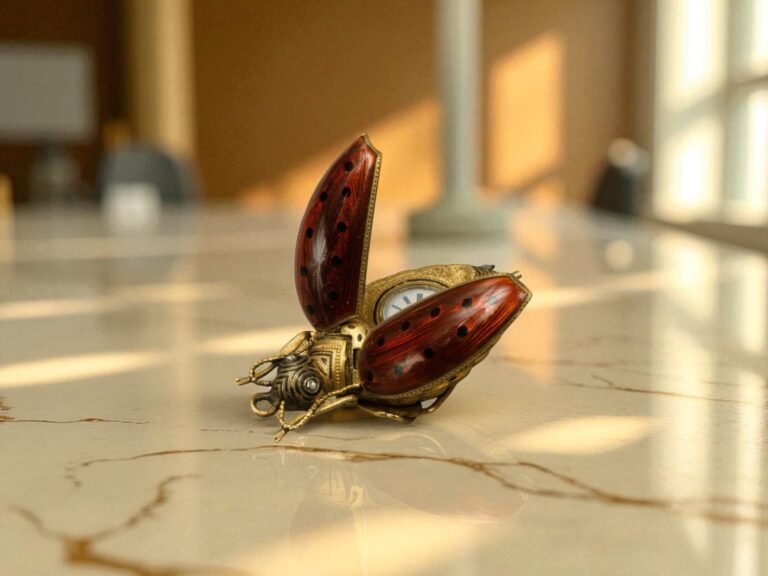
Sacred Origins: Scarabs and Symbolic Flight
The earliest known insect jewelry traces back to Ancient Egypt, where the scarab beetle held deeply spiritual meaning. Revered as a symbol of rebirth and cosmic order, the scarab was linked to the sun god Khepri, believed to roll the sun across the sky like a beetle moves a ball of earth. Scarabs were carved from lapis lazuli, carnelian, and steatite, often glazed in blue or green faience, and set into gold amulets or rings. Some were purely decorative; others served as funerary pieces, engraved with protective spells and placed over the heart of the deceased.
In Ancient Greece, the butterfly — psyche — embodied the soul. Bees were sacred to Artemis and Demeter, symbols of fertility, wisdom, and community. While insects rarely appeared in large-scale jewelry, they emerged in engraved gemstones, gold pendants, and ceremonial accessories.
Roman jewelers adopted the scarab motif and occasionally used bee or butterfly imagery in intaglios and fibulae. Though relatively uncommon, authentic insect-themed jewelry from this period, especially scarab rings or pendants, remains highly prized by collectors and museums alike.
If you’ve come into possession of a scarab ring or ancient-inspired insect motif, it’s worth having it examined. Even later revival pieces from the 19th century can hold considerable value.
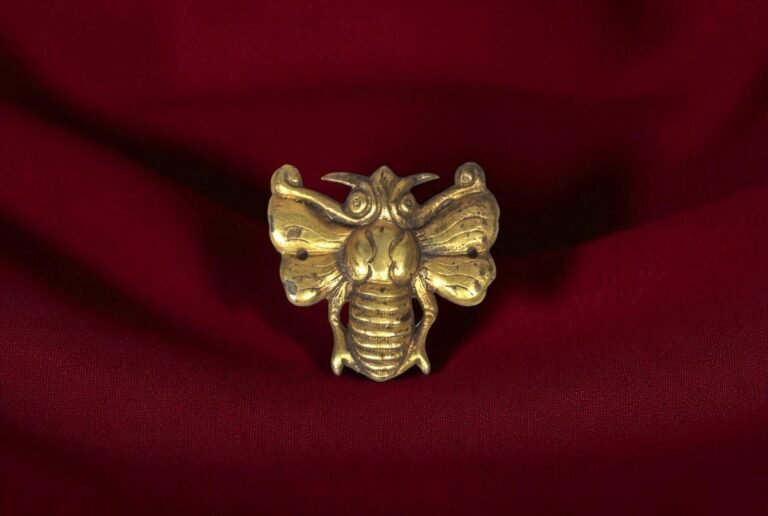
Georgian Era (1714–1837): Subtle Symbolism and Sentiment
Insect jewelry remained rare during the Georgian period, though symbolic references began to appear in sentimental art and mourning pieces. Butterflies, representing the fleeting nature of life or the immortality of the soul, were sometimes depicted in miniature portraits or on enameled lockets. Bees, symbolic of loyalty and industriousness, appeared more frequently in allegorical art than in stand-alone jewels.
When they did appear, insects were usually embedded in handcrafted gold pieces, often alongside other motifs like hearts, urns, or flowers. The craftsmanship of Georgian jewelry is often subtle: chased and repoussé gold, early foiled gemstones, and hand-cut settings. These pieces were almost never mass-produced, making any insect jewelry from this period especially rare and personal.
Collectors today appreciate Georgian jewelry not only for its age but for its quiet intimacy. If you’re looking to sell a piece from this era (particularly one with insect symbolism) its historical context, originality, and condition can all contribute significantly to its market value.
Victorian Era (1837–1901): Naturalism and Exotic Influence
The Victorian period marked a turning point in the popularity of insect jewelry. With the rise of natural history, botanical illustration, and scientific exploration, nature-inspired adornments became a cultural phenomenon. Insects, once relegated to symbolic appearances, now took center stage in wearable art.
Butterfly brooches, crafted in 15k or 18k gold and set with opals, garnets, or seed pearls, were admired for their delicate forms and vibrant color. They represented beauty, metamorphosis, and spiritual awakening. Dragonflies, though less common, were prized for their movement and iridescence, often rendered in enamel and diamonds.
One of the most striking trends was the incorporation of real beetle wings—particularly those from the Sternocera aequisignata, a Southeast Asian species prized for its shimmering green-blue elytra. These iridescent materials were often embedded in combs, earrings, and pendants, usually framed in gold and imported through Britain’s colonial trade routes.
Bees became widely favored as symbols of domestic virtue and hard work. Fashioned as brooches or stickpins, they were often enameled in black and yellow, or set with rose-cut diamonds and garnet eyes. Some high-society brooches even featured moving parts, giving the illusion of beating wings.
Victorian insect jewelry remains highly desirable among collectors, especially when in original condition or signed by a known maker. If you’re considering selling a Victorian insect brooch, its authenticity, materials, and state of preservation will strongly influence its value.
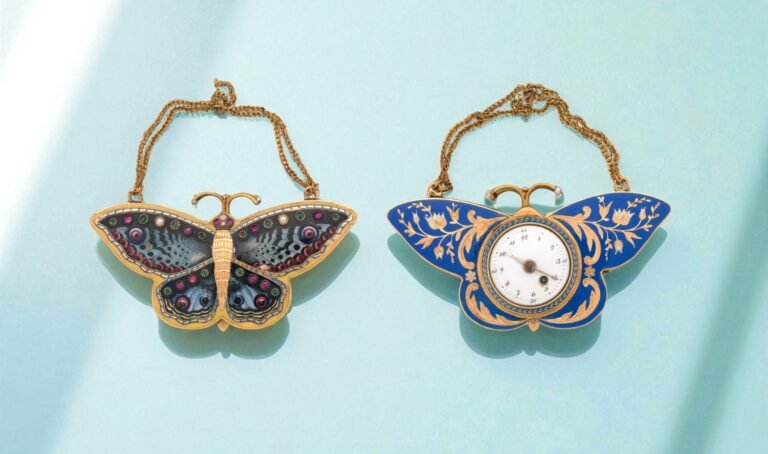
Art Nouveau (1890–1910): The Insect as Dream and Metaphor
No era embraced insect jewelry with more poetic intensity than the Art Nouveau. Here, the dragonfly was not merely an insect. It became a symbol of the unconscious, of transformation, and the fleeting beauty of life. Designers like René Lalique, Lucien Gaillard, and Henri Vever used insects as vehicles for surrealist vision, often blending their forms with the female figure, floral elements, or abstract shapes.
Dragonfly and butterfly brooches from this era were crafted with luminous plique-à-jour enamel, carved horn, moonstones, or opals. The goal was not realism but emotion — an evocation of light, fragility, and myth. Some pieces used stained-glass-like effects to allow light to pass through the wings, giving them an almost living glow.
These works were primarily brooches, hair ornaments, and large pendants. Their scale and detail set them apart from everyday jewelry and place them in the realm of collectible art today. If you own an Art Nouveau insect piece — especially one with enamel work or a known provenance — it may be worth significantly more than expected.
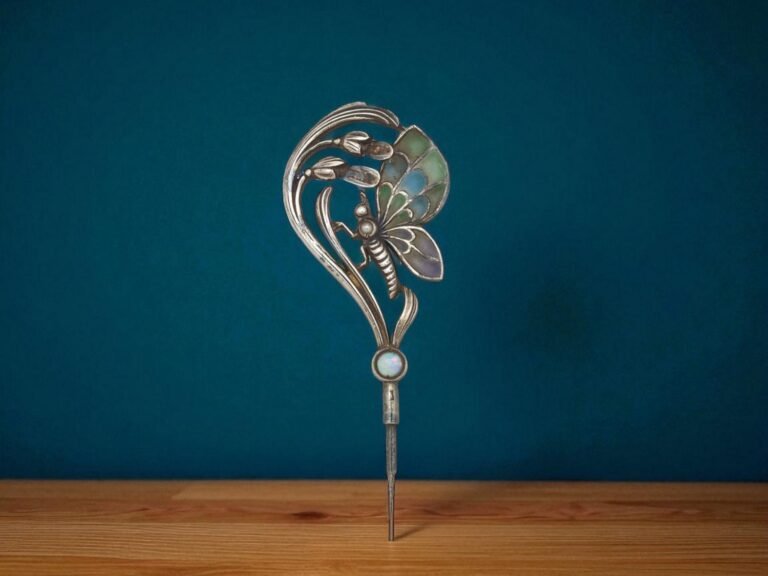
Edwardian & Belle Époque (1901–1915): Airy Symmetry and Diamond Wings
The early 20th century brought with it a preference for lightness and precision. In the Edwardian and Belle Époque periods, insects were still admired, but their forms became more stylized and ethereal. Brooches shaped like butterflies or dragonflies were crafted in platinum, adorned with rose-cut diamonds, demantoid garnets, and milky aquamarines.
Unlike the expressive, mystical creatures of Art Nouveau, these insects reflected balance and refinement. Millegrain edging and openwork filigree gave the designs a lace-like elegance.
Though often overshadowed by floral and ribbon motifs of the time, fine Edwardian insect brooches — especially those featuring green garnets or colored diamonds — can command strong prices on the secondary market.
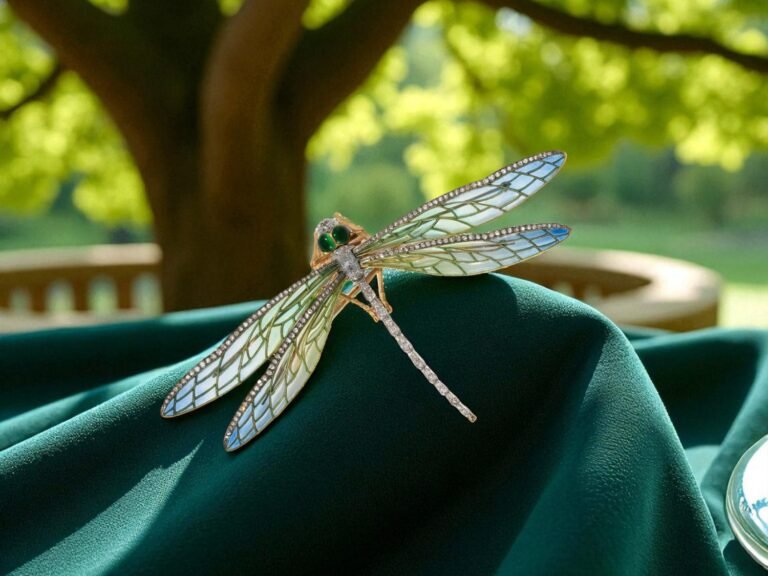
Art Deco (1920s–1930s): Geometry in Flight
The Art Deco era reinterpreted insects through a lens of symmetry, contrast, and global influence. Scarabs, resurrected by the 1922 discovery of Tutankhamun’s tomb, became a popular motif in jewelry made from lapis, turquoise, coral, and onyx. These were often featured in pendants or brooches, their forms simplified to fit Deco geometry.
Butterflies appeared less frequently but were occasionally rendered in stylized clips or dress ornaments, often set in platinum with sharp lines and bright stones. Designers such as Cartier and Tiffany & Co. incorporated Eastern and Egyptian elements, creating scarab-inspired pieces that remain highly collectible today.
If you own an Art Deco insect piece, particularly a signed scarab brooch or a platinum butterfly clip, the combination of age, materials, and design can make it especially desirable for resale.
Mid-Century Modern (1940s–1970s): Bees, Brooches, and Boutique Glamour
By the mid-20th century, the tone of insect jewelry had shifted. What was once symbolic or mystical became charming and chic. The brooch returned as a fashion staple, and jewelers began producing colorful bee, ladybug, and butterfly pins — often in 18k gold and enamel, accented with gemstones.
Foremost among them was Herbert Rosenthal, whose signature diamond bee brooches from the 1960s became icons of mid-century American jewelry. Fashioned with pave diamonds, ruby eyes, and gold wings, they were worn by celebrities and socialites and remain in high demand today.
If you are thinking about selling a vintage bee brooch, especially one from Rosenthal or a similar mid-century designer, it could be worth a premium, especially in original condition with documentation.
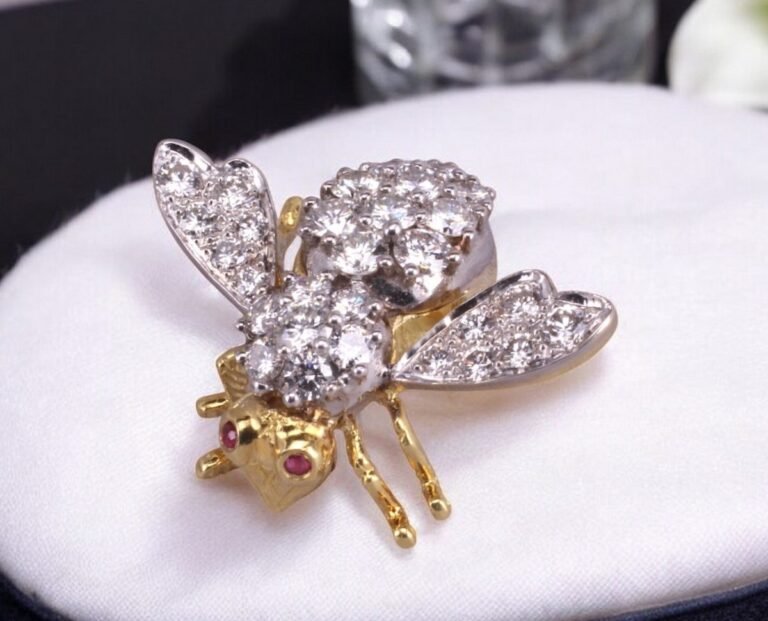
Have Insect Jewelry to Sell?
At C. Blackburn Jewelers in La Jolla, we purchase estate insect jewelry from all eras — especially signed pieces, designer brooches, and antique examples featuring natural materials, enamel, or intricate gem-setting. Whether you’re looking to part with a family heirloom or sell a piece from your collection, we offer private evaluations and generous cash offers.
We welcome inquiries from individuals looking to sell butterfly brooches, diamond bees, Art Nouveau dragonflies, and collectible scarab pendants. Contact Carl Blackburn for a confidential consultation and let us help you discover the value behind your piece.
Call 858-251-3006 or send a text message to 619-723-8589. Learn more about our decades of experience in fine estate jewelry by visiting the following link: San Diego Jewelry Buyers.


